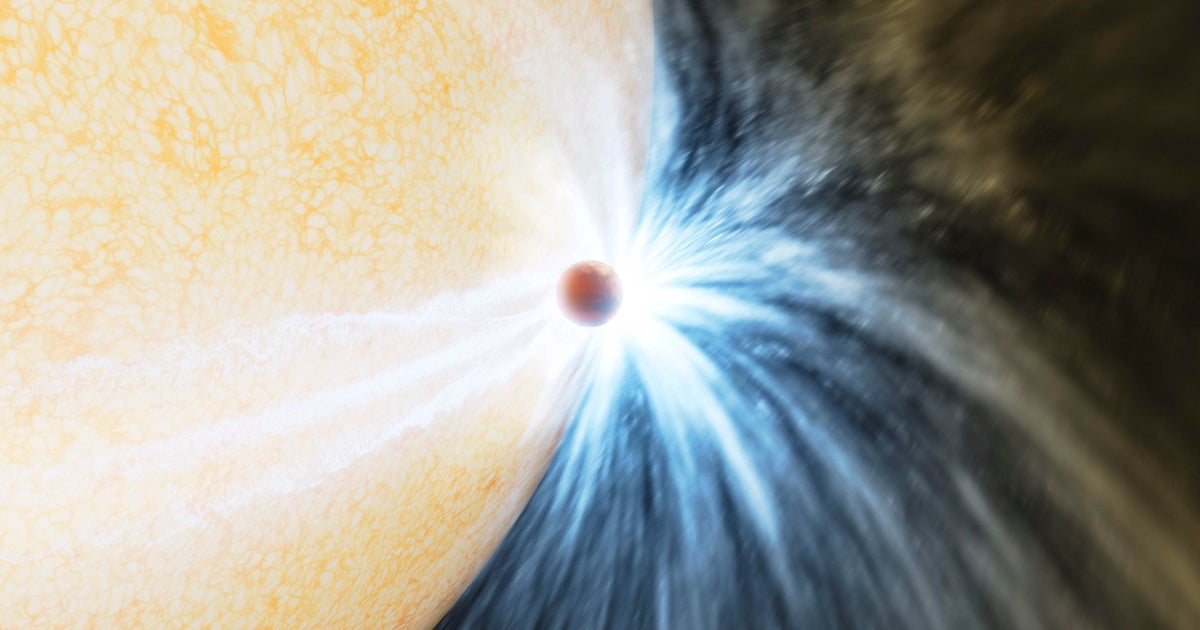
For the first time, scientists have detected a star swallowing a planet — not just a bite or sting, but one big gulp. Experts say Earth is likely to suffer the same horrific fate in about 5 billion years.
Astronomers on Wednesday mentioned Their observations of what appeared to be a gas giant the size of Jupiter or larger being eaten by its star. The sun-like star had been swelling with age over eons, finally becoming so large that it engulfed the near-orbiting planet.
It’s a grim preview of what will happen to Earth when it’s our sun He turns into a red giant. During this growth spurt, the Sun will absorb Mercury, Venus, and possibly Earth, According to NASA.
“If there is any consolation, this will happen in about 5 billion years,” said co-author Morgan MacLeod of the Harvard-Smithsonian Center for Astrophysics.
This galactic feast occurred between 10,000 and 15,000 years ago near the constellation Aquila when the star was about 10 billion years old. As the planet was descending from the stellar vent, the researchers said, there was a rapid burst of light, followed by a long-lasting stream of dust glistening in cool infrared energy.
While there had been previous signs of other planet-gnawing stars and their digestive effects, this was the first time the swallow itself had been observed, according to the study that appears. in Nature magazine.
MIT researcher Kechalai D spotted the bright burst in 2020 while reviewing sky surveys by Caltech’s Palomar Observatory. It took more observations and data analysis to unravel the mystery: instead of a star devouring its companion star, this star devoured its own planet.
Given the star’s billions of years of age, the swallow itself was very short — it happened in one fell swoop, said Mansi Kasliwal of the California Institute of Technology, who was part of the study.
Carol Haswell, an astrophysicist at Britain’s Open University, who had no role in the research, said the findings were “very plausible”. Haswell led a team in 2010 that used the Hubble Space Telescope to pinpoint the star WASP-12 in the process of eating its planet.
“This is a different kind of eating. This star devoured an entire planet in one gulp,” Haswell said in an email. “By contrast, WASP-12 b and the other hot Jupiters we studied previously are being delicately licked and nibbled.”
Astronomers don’t know if more planets orbit this star at a safer distance. If so, Di said it could be thousands of years before they become the star’s second or third cycle.
Now that they know what to look for, researchers will be looking for more cosmic potions. They suspect that thousands of planets around other stars will suffer the same fate as this one, and eventually our solar system will too.
“Everything we see around us, all the things we built around us, will quickly disappear,” said Dee.
/ ap
The observation comes just days after astronomers announced their discovery of a supermassive black hole — aka Scary Barbie – devouring a star. Scientists have described it as one of the “most luminous, energetic, and long-lasting fleeting objects” ever found lurking in a forgotten corner of the night sky.
“Discoveries like this really open our eyes to the fact that we are still unraveling mysteries and exploring the wonders of the universe — things no one has seen before,” the researchers said of the discovery.

“Web maven. Infuriatingly humble beer geek. Bacon fanatic. Typical creator. Music expert.”





More Stories
The speed of quantum entanglement is measured for the first time
NASA is working to “correct and correct” Boeing Starliner issues after first test flight with astronauts
The Starship Super Heavy booster came within one second of canceling the first “capture” landing